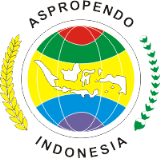Application of Ozone Technology as an Effort to Increase the Economic Value of Vegetable Commodities
Abstract
Vegetables are classified as food ingredients that are easily wilted and easily damaged so that vegetables that have been harvested must be marketed and consumed immediately. At room temperature, the freshness of leaf vegetables can only last for 12 hours. For this reason, proper postharvest handling is needed to maintain quality and extend the shelf life of these commodities, including ozone technology (ozonization). Ozone is able to shed pesticide and bacterial contamination as well as heavy metals attached to the surface of fruit or vegetables, making it safe for consumption for health. Vegetable cultivation by productive communities as micro-entrepreneurs has developed quite a lot. The problem that still occurs is the lack of efforts to extend the shelf life of vegetables that can increase consumer preferences for spinach. The “Mutiara Organik” Farmer Group in Sumberejo Village, Ngablak District, Magelang Regency made these efforts by cultivating vegetables and applying ozonation. The program begins with the introduction of packaging technology and continues with the presentation of permits from the Ministry of Health for ozonized organic vegetables. This program provides farmers with a set of production tools and packaging. The analysis also shows that ozone treatment provides higher efficiency, because it can reduce weight loss compared to Japanese spinach without ozone treatment. In addition, ozone treatment has the potential to increase vegetable productivity and quality.
Keywords: ozonization; shelf life; vegetables
Full Text:
PDFReferences
Amanto, B. S., Prabawa, S., Kawiji, K., & Yudhistira, B. (2021). Food and nutrition awareness systems in the City of Surakarta. Jurnal Kewirausahaan dan Bisnis, 26(2), 64. https://doi.org/10.20961/jkb.v26i2.43688
Asgar, A., Sugiarto, A. T., Sumartini, & Ariani, D. (2011). Kajian ozonisasi (O3) terhadap karakteristik kubis bunga (Brassica oleracea var. botrytis) segar selama penyimpanan suhu dingin. Jurnal Ilmu-ilmu Hayati, 10(6), 787–795. https://doi.org/10.1017/CBO9781107415324.004
Cengiz, M. F., & Certel, M. (2014). Effects of chlorine, hydrogen peroxide, and ozone on the reduction of mancozeb residues on tomatoes. Turkish Journal of Agriculture and Forestry, 38(3), 371–376. https://doi.org/10.3906/tar-1307-14
Haifan, M. (2017). Review kajian aplikasi teknologi ozon untuk penanganan buah, sayuran dan hasil perikanan. Jurnal IPTEK, 1(1), 15–21.
Iflah, T., Sutrisno, & Sunarti, T. C. (2012). Pengaruh kemasan starch-based plastics (bioplastik) terhadap mutu tomat dan paprika selama penyimpanan dingin. Jurnal Teknologi Industri Pertanian, 22(3), 189–197.
Ifmalinda. (2017). Pengaruh jenis kemasan pada penyimpanan atmosfir termodifikasi buah tomat. Jurnal Teknologi Pertanian Andalas, 21(1), 1–7. https://doi.org/10.25077/jtpa.21.1.1-7.2017
Indira, I. A. (2015). Perilaku konsumsi sayur dan buah anak prasekolah di Desa Embatau Kecamatan Tikala Kabupaten Toraja Utara. Jurnal MKMI, 1(1), 253–262.
Mulya, A. Z., Abdi N. A., Vidya A. C., Wandhira W. V., Fadhila, N., & Yudhistira, B. (2019). Prospek pengembangan es gabus buah dan sayur, cita rasa jadul kaya vitamin. Jurnal Kewirausahaan dan Bisnis, 24(13), 12. https://doi.org/10.20961/jkb.v24i13.30646
Prabawa, S., Putri, D. K. R., Kawiji, K., & Yudhistira, B. (2021). Pengaruh variasi waktu ozonisasi dan suhu penyimpanan terhadap karakteristik fisika, kimia, dan sensoris pada daging ayam broiler (Gallus domesticus). Jurnal Ilmiah Rekayasa Pertanian dan Biosistem, 9(2), 168–184. https://doi.org/10.29303/jrpb.v9i2.277
Purnomo, E., Suedy, S. W. A., & Haryanti, S. (2017). Pengaruh cara dan waktu penyimpanan terhadap susut bobot, kadar glukosa dan kadar karotenoid umbi kentang konsumsi (Solanum tuberosum L. Var Granola). Buletin Anatomi dan Fisiologi, 2(2), 107. https://doi.org/10.14710/baf.2.2.2017.107-113
Rosalina, Y., Alnopri, & Prasatyo. (2012). Disain kemasan untuk meningkatkan nilai tambah madu bunga kopi sebagai produk unggulan daerah. Agroindustri, 2(1), 8–13.
Siahaan, S. P., & Widayanti, S. M. (2020). Peran teknologi ozonisasi dalam mempertahankan kesegaran dan memperpanjang masa simpan buah nenas (Ananas Comosus (L) Merr.: Review. Strategi Ketahanan Pangan Masa New Normal Covid-19, 4(1), 76–88.
Tamaki, M., & Ikeura, H. (2012). Removal of residual pesticides in vegetables using ozone microbubbles. Pesticides - Recent Trends in Pesticide Residue Assay, 1–25. IntechOpen. https://doi.org/10.5772/48744
Wahyuni, S., Triyono, S., & Tusi, A. (2014). Perbandingan teknik pemajangan sayuran daun untuk mempertahankan kesegaran selama penjualan rekayasa sumber daya air dan lahan. Jurnal Teknik Pertanian Lampung, 3(1), 69–82.
Wowor, A. K., Ransaleleh, T. A., Tamasoleng, M., & Komansilan, S. (2014). Lama penyimpanan pada suhu dingin daging broiler yang diberi air perasan jeruk kasturi (Citrus madurensis Lour.). Zootec, 34(2), 148. https://doi.org/10.35792/zot.34.2.2014.5980
Yudhistira, B., Affandi, D. R., & Nusantari, P. N. (2018). Effect of green spinach (Amaranthus tricolor L.) and tomato (Solanum lycopersicum) addition in physical, chemical, and sensory properties of marshmallow as an alternative prevention of iron deficiency anemia. IOP Conference Series: Earth and Environmental Science, 102, 1–8. https://doi.org/10.1088/1755-1315/102/1/012007
Yudhistira, B., Sari, T. R., & Affandi, D. R. (2019). Karakteristik fisik, kimia dan organoleptik cookies bayam hijau (Amaranthus tricolor) dengan penambahan tomat (Solanum lycopersicum) sebagai upaya pemenuhan defisiensi zat besi pada anak-anak. Warta Industri Hasil Pertanian, 36(2), 83. https://doi.org/10.32765/wartaihp.v36i2.5286
Refbacks
- There are currently no refbacks.













